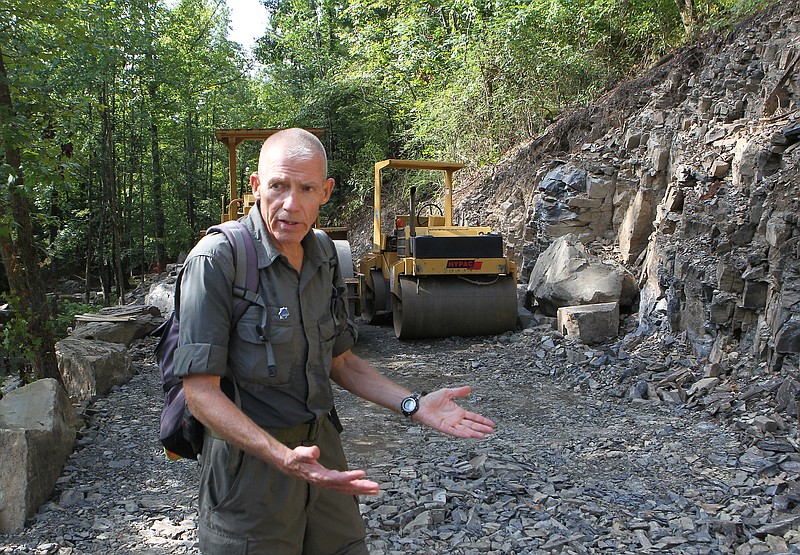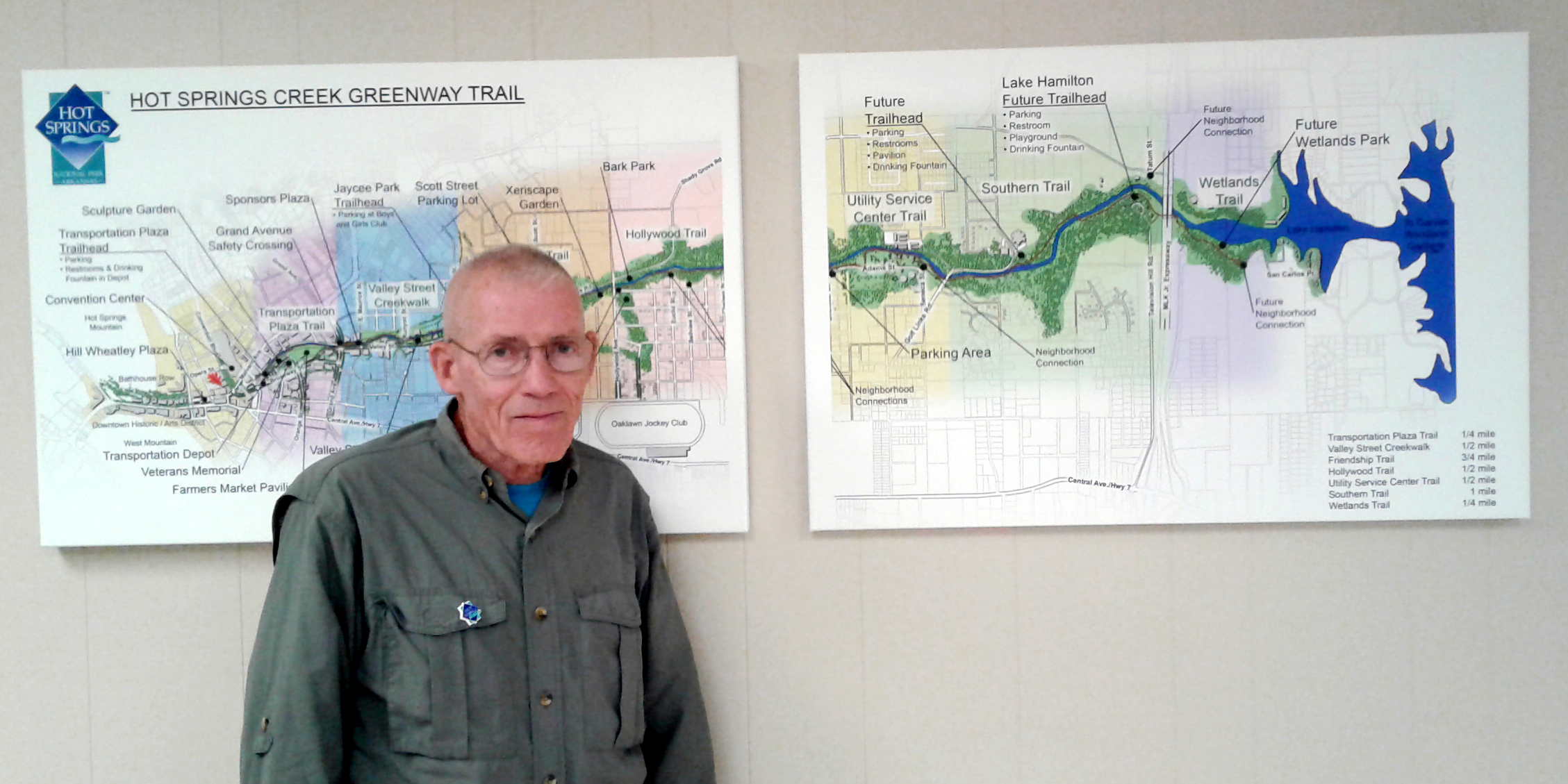Ken Freeman's powerful legs have served him well, carrying him across rough country as a Marine Corps infantry officer and along the many trails he's helped stake out as the city of Hot Springs' trails coordinator.
They're on display year-round, as his preference for shorts is a sartorial choice he's loath to deviate from, no matter the weather or how thick the vegetation encumbering his route.
"I wear zip offs," he said. "I normally carry the legs in my pack. If I feel like I need them, I can zip them on."
Those times are rare. Even in the bug-infested wilderness he traversed during his 16 years with the city, he eschewed long pants for his trademark shorts.
"I consider myself to be part of the food chain when I'm out there," he said.
Freeman's sturdy stems will soon be conveying him along trails in the Williamsburg, Va., area, where he and his wife, Tracy, are moving to be closer to their son and grandchildren.
"We need to get them outside on some trails," he said of the five grandchildren.
He'll be closer to family but far away from the rugged, scenic topography he's grown fond of in Hot Springs, where the Hot Springs High School alumnus returned to in 1990 after a 20-year career in the Marine Corps.
"I have not seen a creek in that area around Williamsburg that can hold a candle to Hot Springs Creek or Stokes Creek or Gulpha Creek for water flowing over the rock," Freeman said. "They don't have the hills like we've got. I'll miss some of these creeks."
Many of the city trails dog walkers enjoy after sunrise, families pad along during the day and fitness enthusiasts jog and bike down in the setting sun were plotted by Freeman.
"Normally the first thing I do is look at a map," he said. "In my case, I always want to see a map with contours, so we know where the ups and downs are and where the drainage runs. Then I try to lay out a trail keeping those contours in mind. We don't want the ups and downs of a trail to exceed 5%."
Freeman said his time as an infantryman taught him to find the best route between two points.
"There was lots of map work and laying out patrol routes," he said. "I would say that contributed to my comfort level of looking at maps and contours and looking for routes to go from point A to point B.
"We're really blessed in Hot Springs with creek corridors that go where people want to go. They go from the area of downtown to a lake. With our geography and topography, there's lots of rocks in the creeks, so the creeks make good sounds and they're pretty. It's not like a muddy drainage ditch."
Meandering along the north-south axis of the city's corporate limits, Hot Springs Creek drains a large part of the city. The stormwater-borne debris it collected and the unpermitted discharges it received turned the once pristine waterway into an eyesore.
"Hot Springs Creek had been neglected for a whole bunch of years," Freeman said. "There was sewage that would go into it in some places. People kind of neglected it because they thought it was trashed. They just avoided it."
The Hot Springs Creek Greenway Trail changed that, making the creek a highly trafficked corridor. The city is working to extend the trail from its current southern terminus 800 feet south of the Golf Links Road bridge to where the creek empties into Lake Hamilton.
Freeman helped plot the route.
"Some of the early parts were under or adjacent to transmissions lines," he said. "They would be cut periodically, but you'd get lots of undergrowth. A lot of it was very thicket oriented. To go through it was basically bushwhacking with loppers and saws."
The trail serves as the spine of an extensive trail complex that, when completed, will provide a thoroughfare for bicyclists and pedestrians, allowing them to bike or walk from their homes to downtown or the lake.
"The city's bicycle-pedestrian plan that was developed in 2000 outlines how facilities like the Hot Springs Creek Greenway Trail, and ones running along Gulpha Creek and running along Stokes Creek, all become interconnected," Freeman said. "You'll have a network of pathways to use not only for exercise but as transportation corridors."
Freeman laid out the path that's become the Bees Knees trail in the city's Northwoods Trails complex. It's one of several trails he plotted that the International Mountain Bicycling Association used as a template for the 17 miles of trails it's threaded through the 2,000-acre woodland.
A trail on the east end bears Freeman's name. At 3.6 miles, it's the longest corridor in the Northwoods.
Tuesday was Freeman's last day working for the city's parks and trails department as a part-time independent contractor. He hopes his successor will work full time.
"I'm hoping that we convinced them they really need a full-time trails coordinator," he said.

